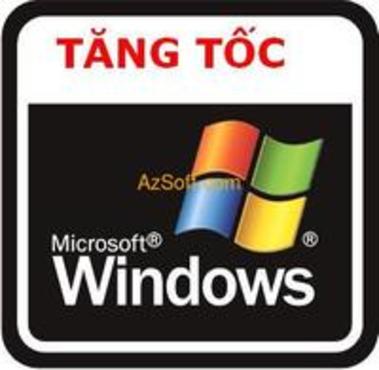After a long period of use, your computer will slow down. There are many factors that affect the speed of the computer. If you want to speed up your computer, you'll have to test a variety of applications from Windows start up, free hard drive space, clean up your hard drive to add more RAM, or even replace your hard drive.
Depending on the circumstances and financial conditions, choose the solutions we recommend in this article to improve the speed of your computer.
You can refer to how to speed up Windows for each specific as:
- Comprehensive troubleshooting tips Windows 10/8 / 8.1 / 7 and Windows XP slow
- 7 ways to customize the post will help your Windows 10 "as fast as the wind"
- Speed up your Windows 7 PC, this is all you need to do
Step 1: Edit the Registry Editor
Press Windows + R key combination, enter regedit to activate Registry Editor. Select HKEY_CURRENT_USER branch & gt; Control Panel & gt; Desktop.
- AutoEndTask: Double click and enter number 1, the purpose is to automatically shut down the crashes service more quickly.
- MenuShowDelay: Double click and enter the number 0, the purpose of the Start menu is faster.
- HungAppTimeout, WaitToKillAppTimeOut: Double click on the value 200 to reduce the waiting time.
- Click New & gt; String Value: Press F2 to name this key WaitToKillServicesOut, double-click enter value 200.
- Select the HKEY_LOCAL_MACHINE branch & gt; System & gt; CurrentControlSet & gt; Control: Double click the HungAppTimeout tag, enter a new value of 200.
So your shutdown time will be at least twice as fast.
Step 2: Use software to accelerate the computer
In my experience, there are three programs that can be used:
- Startup Faster 2004: This program will help you reduce the computer boot time twice, the effect is very high. You can download at. Turn off the programs that are running by default when Windows starts to reduce boot time.
- TuneXP 1.5: This is a comprehensive computer acceleration program to exploit 100% efficiency of the PC. You can download TuneXP It is free, 1Mb, only Win2000 / XP compatible. There are many functions in this program in the type Enable / Disable, click on Enable to enable the computer optimization features. But most importantly, you have to run two entries Defrag boot files and Ultra-Fast Booting to increase the boot time of the computer.
- SpeederXP: This is a computer accelerator that I found very effective. However, please note that some games will not accept this program and you must turn it off if you do not want to hang up like Pro Evolution Soccer 4 ...
Step 3: Enhance buffer memory
This is a solution to increase the amount of virtual memory to help the computer "breathing" when the amount of RAM is exhausted and also a condition for some new games can run. Right-click My Computer, select Properties, select the Advanced tab> Performance & gt; Settings, select the Advanced tab, the Virtual memory option Change and enter the Initial Size (with a 40GB drive) is 400 (the amount of cache required by many games today), 300 for the 20GB drive, Maximum size enter a number greater than the number on your own. Hit Set and click OK.
Step 4: Delete computer junk and delete font
This is an important step to speed up computer startup. Some programs help to clean up the computer in a positive way but not as effective as we do manually. Go to the Windows directory of the operating system and delete the Drive Cache, LastGoodKnown folder, and delete the files in the Downloaded Installations, Prefetch, RegisteredPackeges, and Repair folders, in C: / Windows / System32 with the Reinstall Backup, Dll Cache. Remember that as many of the fonts in your operating system start to slow down, leave the necessary fonts and delete the fonts that you rarely use or have never touched.
Step 6: Shut down services when the computer boots
The services help a lot in the necessary situations, in addition it is completely useless and time consuming to boot your computer. If your computer does not have an Internet connection, right-click it My Computer choose Manager , select the item Services and Applications & gt; Services and select Disable The following items are available: Alert, Automatic Update, Computer Browser, DHCP Client, Help and Support, Human Interface Device Access, Messenger, Print Spooler, Routing and Remote Access, Server, Telephony, and Telnet. Client, Messenger, Telephony, Telnet.
Step 7 After completing the above steps, run a virus scanner to scan your entire hard drive, remove any potential crashes or slow down your computer. It is best to scan with powerful programs like Norton Antivirus, McAffe, AntiVir - Personal Edition. ..
Step 8 After performing the above steps, your hard drive will be extremely cluttered, use a program to defragment the hard drive to rearrange them to a corner.
Nguyen Dinh Dai Duong











